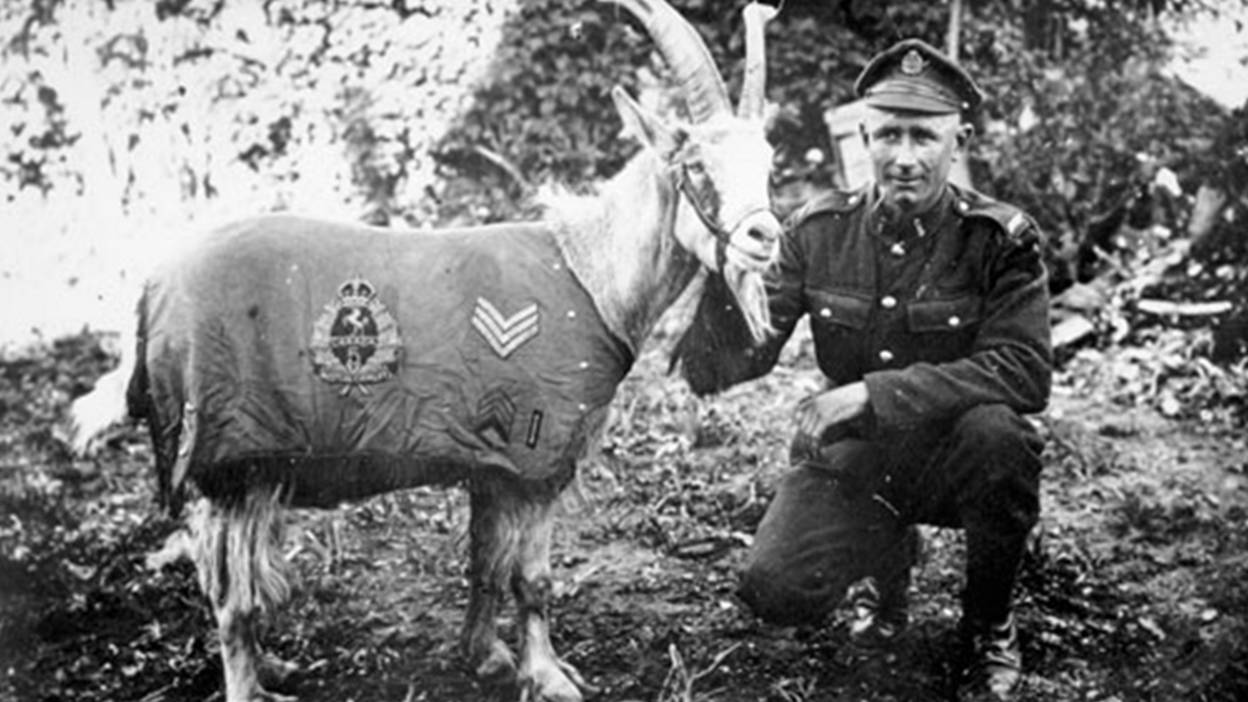 Polish Institute
Polish InstituteFive badass animals that Planet Earth II's giraffe reminded us of
On Sunday's Planet Earth II, we saw lion v giraffe, bat v scorpion and a whole army of locusts. But here are five animals that took the achievements of animals to the next level. These are the badass forgotten creatures who shaped history by fighting, drinking and brawling their war through war.
1. Corporal Wojtek. The ammunition bear that washed down marmalade with beer and cigarettes.
Adopted as a cub in Iran in 1942, Wojtek was raised on milk from a vodka bottle. He was officially enlisted into the Polish 2nd Corps as a corporal and marched from Iran to Egypt, later carrying crates of artillery shells at the 1944 battle of Monte Cassino.
He drank, smoked and wrestled with the other soldiers, finally retiring to Edinburgh Zoo. Rumour has it he would come to life when spoken to in Polish. In 1950s Edinburgh, the opportunities to come alive were probably quite slim. Here’s a video of him wrestling with a soldier.
2. Sergeant Bill. The rebel goat who escaped enemy capture during WWI.
 Saskatchewan Archives Board
Saskatchewan Archives Board
Bill was one of those goats who tries their best not to be a hero - and still becomes one. After being smuggled to the Western Front, he was arrested twice within a month, once on suspicion of eating the Battalion Roll, the other time for charging at a superior officer.
He redeemed himself in battle, quickly earning promotion to sergeant. He was wounded by shrapnel, suffered trench hoof and shell shock, not to mention being captured and gassed by the Germans, before somehow being retrieved by his unit. His proudest moment came when he head-butted three soldiers into a ditch, saving them from a mortar shell. Even when he was saving lives, he was doing it on his terms. The don.
3. Sergeant Stubby the Dog. The spy-capturing pup who gave Forest Gump a run for his money.
Stubby was a mongrel smuggled onto a ship by the 102nd Infantry in 1917. When he was discovered by the commanding officer, Stubby used his training to salute him, like a Jedi. Stubby was then allowed to stay.
The terrier went on to fight in 17 battles, rescue wounded soldiers, endure shrapnel and suffer gas. He single-handedly captured a German spy, for which he was promoted to Sergeant. After the war, Stubby toured the US with President Woodrow Wilson and twice visited the White House, meeting Presidents Harding and Coolidge. That is more presidents than most dogs meet. If he were alive today, he would probably have introduced Trump to Obama. That’s our Stubby.
4. Siwash the Duck. The alcoholic duck who cut his teeth against a Japanese rooster and later recruited soldiers for the Korean War.
Another enthusiastic drinker, Siwash was acquired in a New Zealand tavern in 1943 by the US 1st Battalion, 10th Marine Division. The duck became their mascot, participating in multiple offensives against Japan, and progressing to mascot of the entire 2nd Marine Division. Throughout all this, Siwash was known for his love of beer.
Life Magazine reported the duck’s finest hour:
“With utter disregard for his own personal safety, Siwash, upon reaching the beach, without hesitation engaged the enemy in fierce combat, namely, one rooster of Japanese ancestry, and though wounded on the head by repeated pecks, he soon routed the opposition. He refused medical aid until all wounded members of his section had been taken care of.”
Siwash later worked as a recruiter, signing soldiers up for the Korean War, before eventually dying of a liver ailment. Veteran marines denied that there was any connection with the duck’s drinking habits.
5. Cher Ami the Pigeon. The one-legged pigeon injured in battle, not morning rush hour.
During a decisive WWI offensive in 1918, a battalion of 500 men became surrounded by enemy soldiers and friendly artillery fire. Cher Ami ducked through German bullets and flew 25 miles in as many minutes. She arrived badly wounded, her leg hanging on by a string. But on that leg was the all-important message alerting the US troops to stop firing on their own side. The battalion was spared, later managing to escape.
The regiment’s medics saved Cher’s life, but not her leg. She was carved a wooden one and sent back to the US. The commander of the US forces on the Western Front himself oversaw the departure of Cher, who was after all, a pigeon.
So next time your curse either a pigeon or your 4G, think back to the battalion with no network coverage at all and our five legendary animal soldiers.








